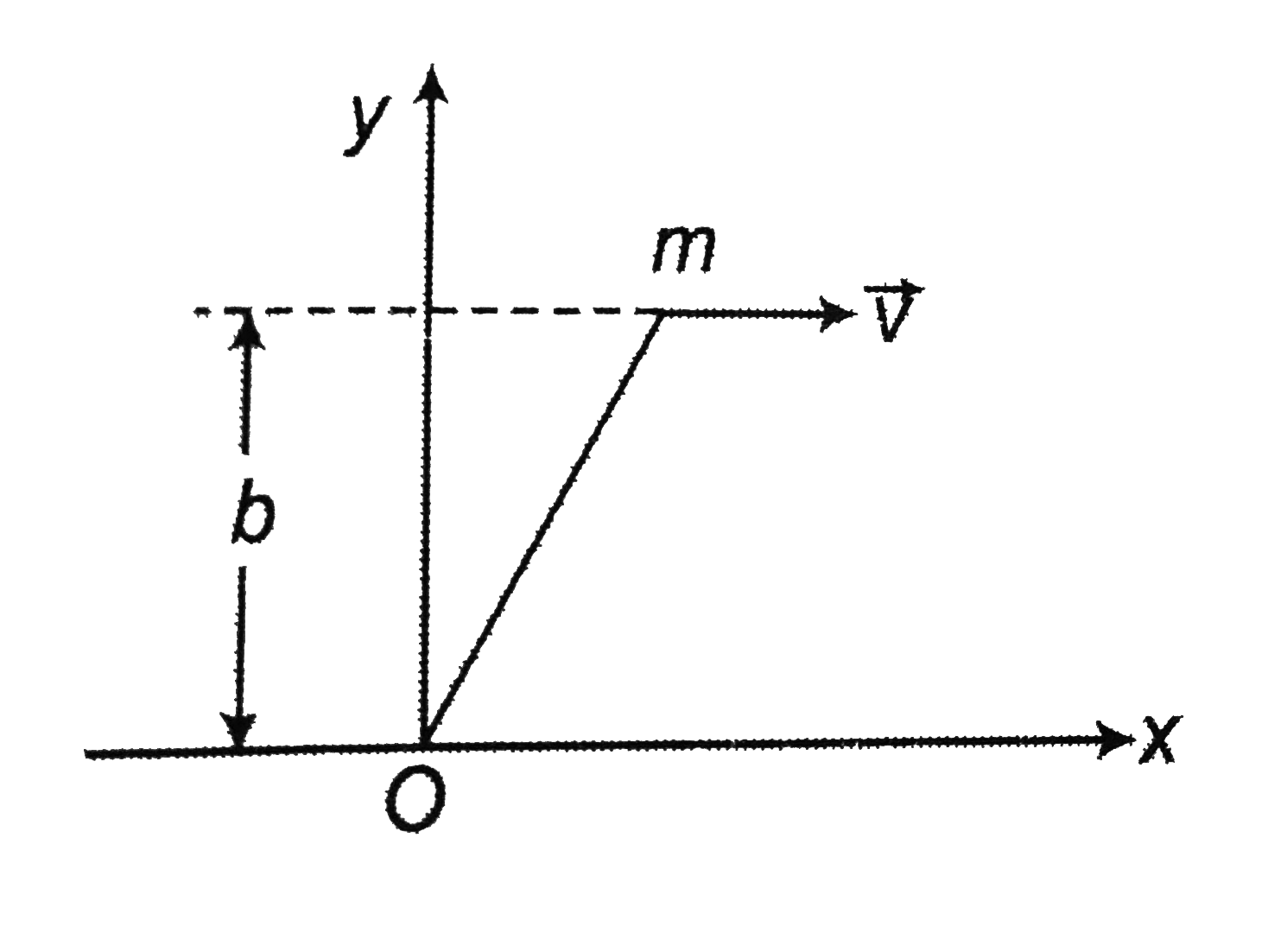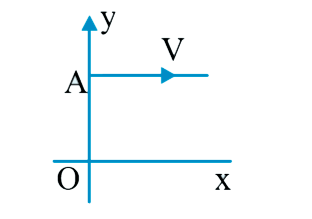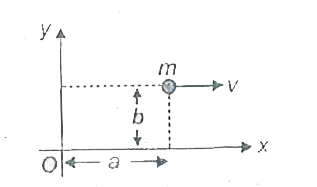If a particle of mass m is moving with constant velocity v parallel to x-axis in x−y plane as shown in fig. Its angular moment with respect to origin at any time t will be
We know that
Angular momentum →L=→r×→p in terms of components becomes
∣∣
∣
∣∣ˆiˆjˆkxyzpxpypz∣∣
∣
∣∣
AS motion is in x-y plane (i.e., z = 0 and px=0)
→L=ˆK(xpy−ypx) ......(i)
Here x= vt, y= b, px=mv and py=0
So, →L=ˆK[vt×0bmv]=−μbˆk" "(ii)
Similar Questions
If the particle of mass m is moving with constant velocity v parallel to x-axis in x-y plane as shown in (figure), Find its angular momentum with respect of origin at any time t.

View SolutionA body of mass m is moving with a constant velocity along a line parallel to the x-axis, away from the origin. Calculate its angular momentum with respect to the origin?

View Solution
Knowledge Check
A particle of mass m is moving with constant velocity v parallel to the x-axis as shown in the figure. Its angular momentum about origin O is
 AmvbBmvaCmv√a2+b2Dmv(a+b)
AmvbBmvaCmv√a2+b2Dmv(a+b)A mass m is moving with a constant velocity along a line parallel to the x-axis, away from the origin. Its angular momentum with respect to the origin.
AzeroBremains constantCgoes on increasingDgoes on decreasingA body of mass m is moving with a constant velocity along a line parallel to the x-axis, away from the origin. Its angular momentum with respect to the origin
Ais zeroBremains constantCgoes on increasingDgoes on decreasing
A particle moves with a constant velocity parallel to the X-axis. Its angular momentum with respect to the origin
View SolutionA particle performs uniform circular velocity along a line parallel to the x-axis, away from the origin. Its angular momentum with respect to the origin.
View SolutionA particle moves with a constant velocity pralel to the X-axis. Its angular momentum with respect to the origin
View SolutionA mass m moving with a constant velocity along a line parallel to the axis, away from the origin. Its anguarl momentum with respect to the origin
View SolutionA mass M moving with a constant velocity parlale to the X-axis. Its angular momentum with respect to the origin
View Solution
